[javascript protected email address]
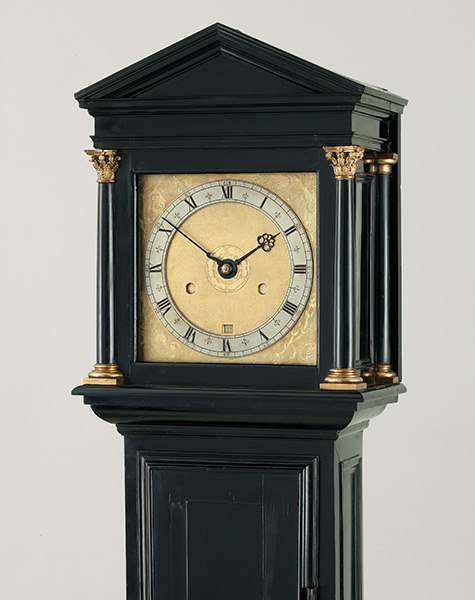
Joseph Knibb, Oxford

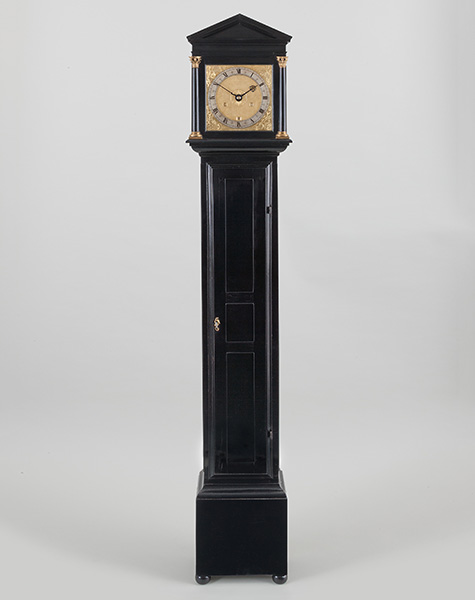
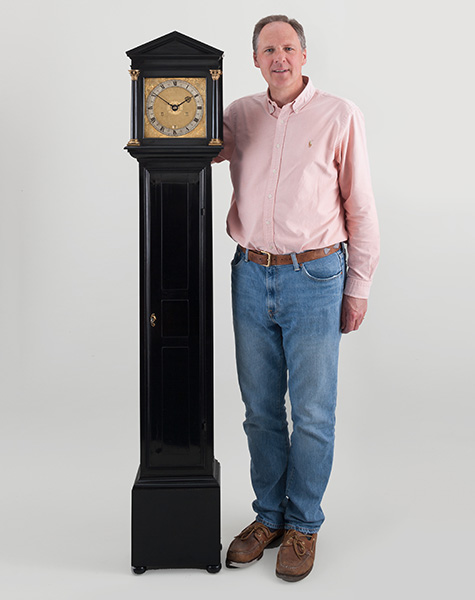
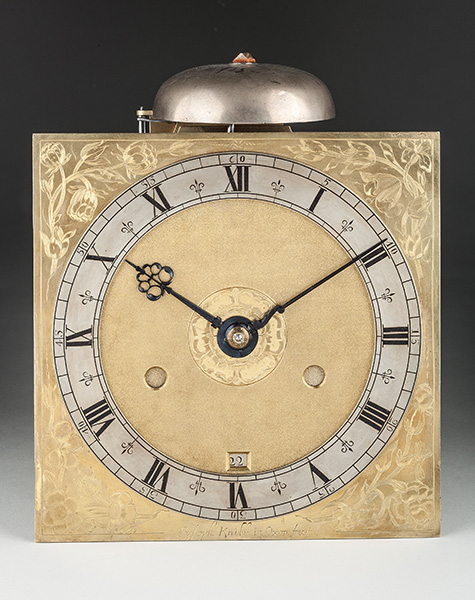

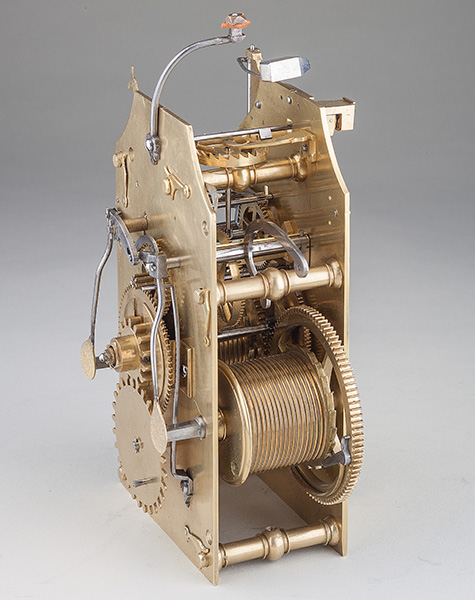
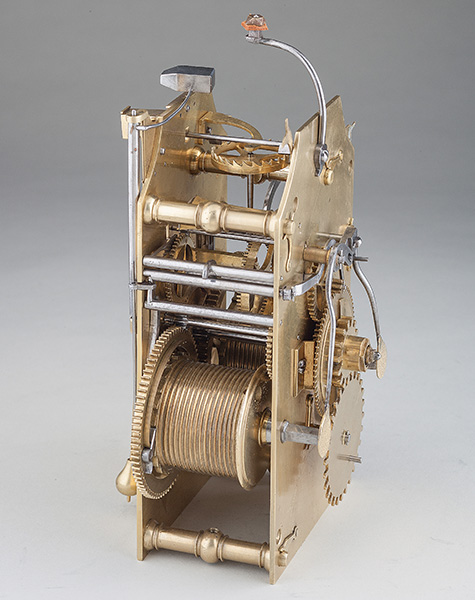
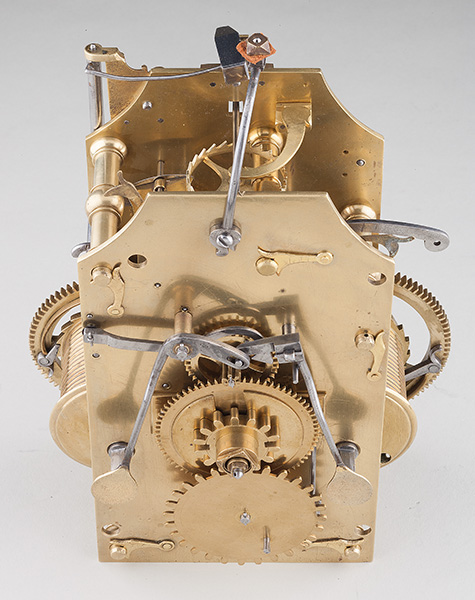
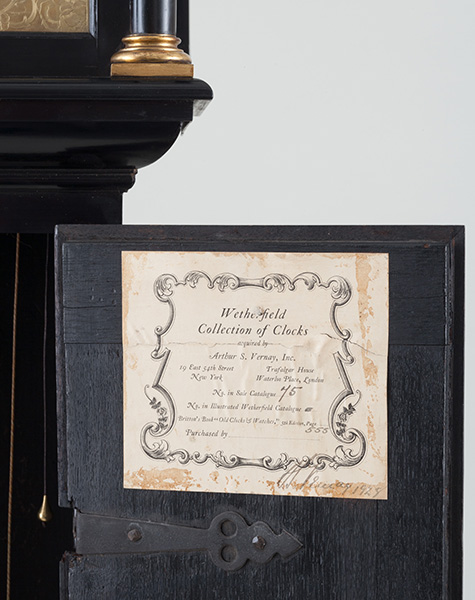
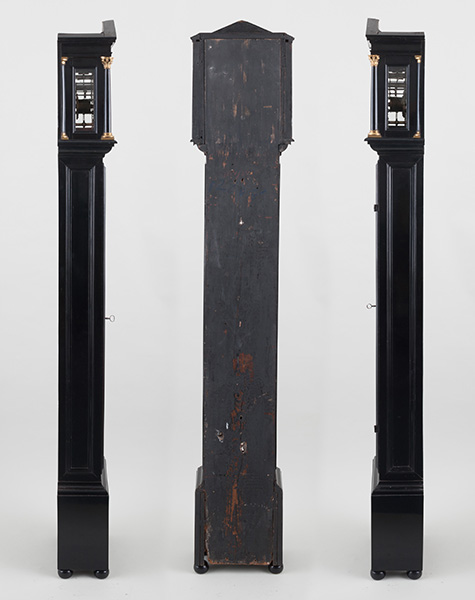
Circa 1666
Sold
5 feet 11 inches
An exceptionally rare 8-day ebonised longcase clock. CASE The well-proportioned plinth is raised on four ebonised bun feet and the backboard extends nearly the entire length of the case. The panelled trunk door has iron hinges and is applied with a gilt-brass eagle escutcheon. The inside of the door is pasted with a label for The Wetherfield Collection of Clocks No. 75 in the sale catalogue and illustrated in the 5th edition of Britten’s Book of Old Clocks and Watches on page 555 The rising hood has an architectural pediment flanked to the sides with three quarter columns with gilt-brass Corinthian capitals. The sides of the hood with the original inset mouldings framing the glazing. DIAL The 8¼ inch square fully latched dial is signed Joseph Knibb in Oxon fecit at the base interrupting the scored line border. The narrow brass chapter ring is engraved with Roman hour chapters with fleur de lys half hour markers and an outer Arabic minute sector. The lightly matted centre is finely engraved with a central rosette; the winding holes are shuttered and the window for the calendar aperture is positioned above chapter VI. The blued steel hands are beautifully pierced and sculpted and the spandrels are exquisitely engraved with tulips and daisies amongst foliage. MOVEMENT The movement has typically early long shouldered plates joined by six slender ringed baluster pillars, all of which are latched at the front plate. The going train has a verge escapement with short bob pendulum and bolt-and-shutter maintaining power. The strike train retains almost complete originality, the hammer is mounted vertically on the backplate in the early manner pivoted at the top on a shaped brass cock with the hammer striking on the outside of the original bell which is mounted above the plates; the strike is regulated by the original countwheel which is secured to the backplate towards the upper right quadrant. The oak seatboard supports two rectangular movement blocks with four brass ‘staples’ on which to rest the plates, the gut lines are secured to the seatboard by two iron hooks located at the front right foot of each block. The hood spoon locking system operates in the underside of the seatboard. Provenance 1900-1920’s The Wetherfield Collection of English Clocks 1928 sold by Arthur S. Vernay The collection of the late John Howes, U.S.A. Literature October 1928 advertised by Arthur Vernay in Country Life magazine as the ‘lead clock’ for the sale of the Wetherfield Collection. Arthur S. Vernay sale catalogue, lot 32. Britten Old Clocks & Watches and their makers, sixth edition, page 609, illustrated fig. 820 (where described as an ebony-cased quarter clock about 1680) NOTES There appear to be only three existing two-train longcase clocks left in this world by Joseph Knibb from his very early days in Oxford; the present clock, the walnut longcase and the ebonised longcase in the collection of Dr. John Taylor. This clock is easily the smallest of the three, standing just ???? high and by definition it is technically a miniature longcase clock. The provenance is unknown prior to being acquired by Arthur Wetherfield. It is not illustrated in his famous limited edition book, Old English Clocks The Wetherfield Collection, which was published in 1907, presumably because he acquired it after the book was published - perhaps it was a case of the longer the collector collects the more refined his taste becomes. When Wetherfield died in 1930 half the collection was acquired by Arthur Vernay, a dealer of English and American furniture and clocks based in East 54th Street, New York. Vernay produced a catalogue (this example being No. 32) and he advertised the collection in Country Life and used the Knibb longcase as his ‘flagship’ example in the advert.
